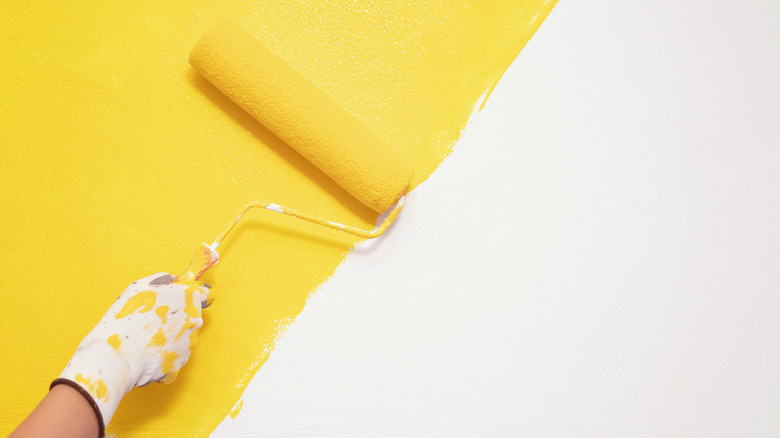Why You Should Avoid Buying Paint With This Ingredient
A fresh coat of paint has the power to revive outdated furniture and brighten up even the dullest of spaces. What's more: According to the experts at Martha Stewart, paint has the potential to make a room look bigger, either vertically or horizontally, depending on the color. Despite its many aesthetic benefits, however, some paint brands can cause a number of unpleasant physical symptoms, including dizziness, nausea, fatigue, and, in some cases, asthmatic and/or allergic reactions (via Healthline).
When it comes to painting, it's easy to gloss over the toxic ingredients a paint contains in favor of a certain price or color. But, that "new paint" smell is hiding more than you think. In fact, it's a tell-tale sign that your brand-new paint is made with a certain toxic ingredient that you definitely don't want to introduce into your home. Read on to learn more about which ingredient to avoid and how to choose a paint color that's both non-toxic and environmentally friendly.
Everything you should know about volatile organic compounds
The nasty ingredients in paint that you want to avoid are VOCs — volatile organic compounds. The Environmental Protection Agency (EPA) defines VOCs as "emitted gases from certain solids or liquids." They consist of a variety of chemicals and can cause both short-term and long-term health problems. In addition to being found in paint, paint strippers, and other solvents, VOCs can be found in aerosol sprays, select cleansers and disinfectants, and some air fresheners, among other common household products.
The good news? Most, if not all, hardware stores sell either low- or no-VOC paint (or both), but you'll need to look at the fine print. "The FTC has designated what can and can't be marketed using free-of claims in their published Green Guide under rule 260.9," Rick Watson, director of product information and technical services at Sherwin-Williams, tells Apartment Therapy. "No-VOC paints can still contain a trace number of VOCs (which varies per product), as long as they're not at a level that would cause material harm."
If you're unable to find a no- or low-VOC paint, the EPA recommends increasing ventilation while painting and throwing out any unused or little-used containers when you're finished because gases can leak even from closed containers. Instead of tossing these potentially hazardous cans into the garbage, do some research to find a place where you can dispose of them properly (via EPA). If you do decide to keep any leftover paint, be sure to store it in a well-ventilated area that's inaccessible to children and pets.

